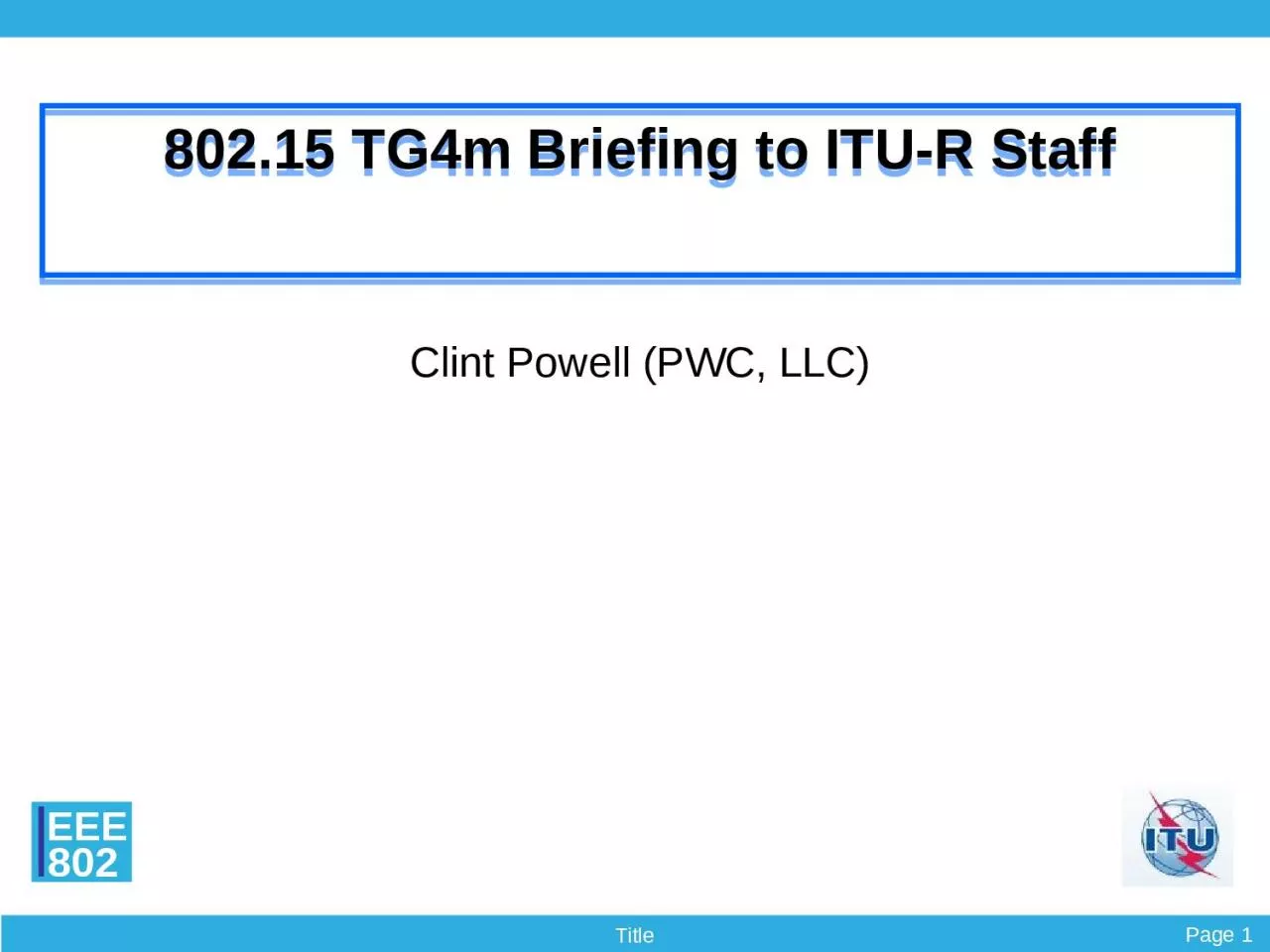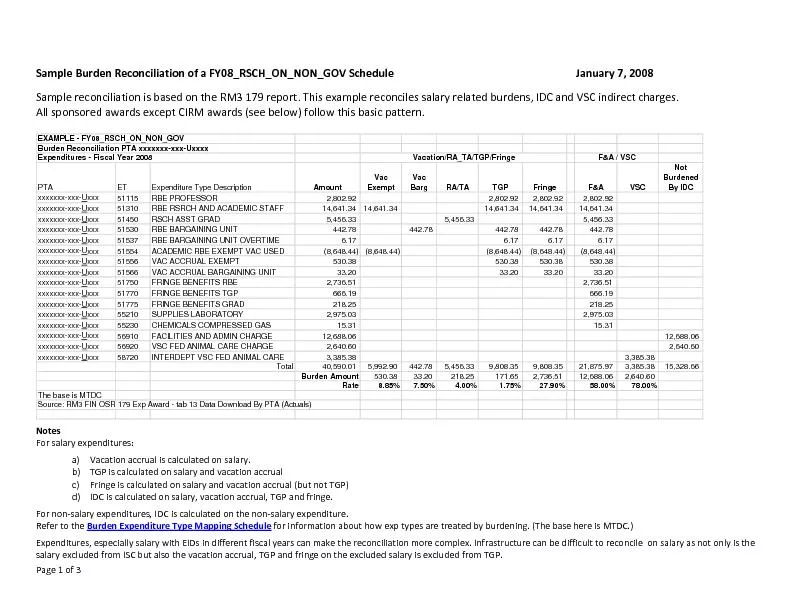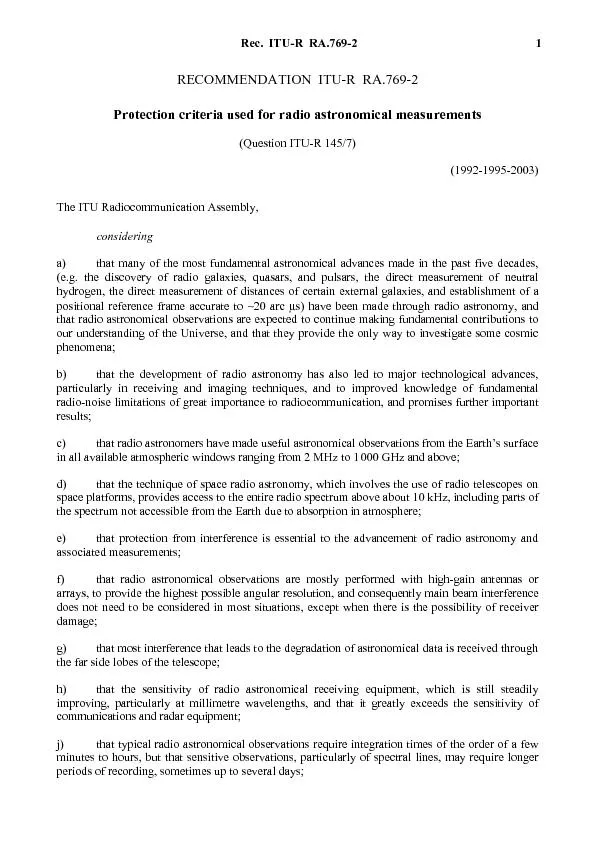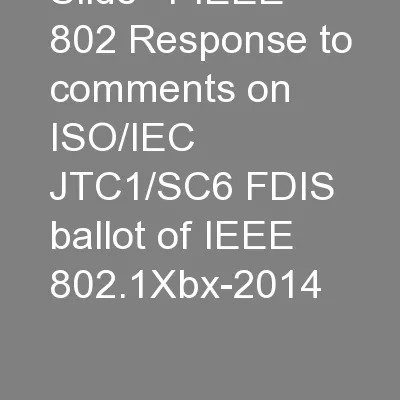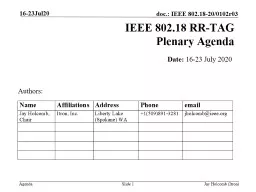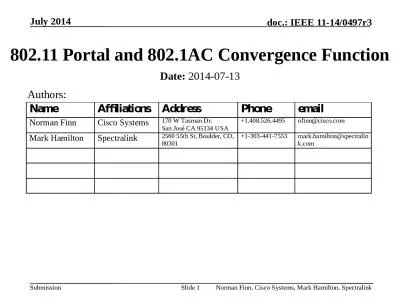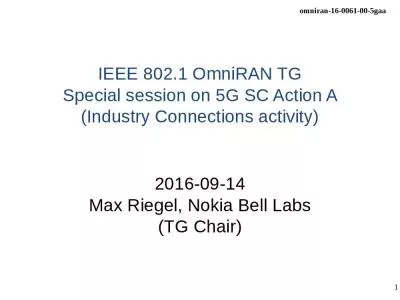PPT-802.15 TG4m Briefing to ITU-R
Author : amber | Published Date : 2024-03-13
Staff Clint Powell PWC LLC Title IEEE Standard for Local and Metropolitan Area Networks Part 154 Low Rate Wireless Personal Area Networks LRWPANs Amendment 6 TV
Presentation Embed Code
Download Presentation
Download Presentation The PPT/PDF document "802.15 TG4m Briefing to ITU-R" is the property of its rightful owner. Permission is granted to download and print the materials on this website for personal, non-commercial use only, and to display it on your personal computer provided you do not modify the materials and that you retain all copyright notices contained in the materials. By downloading content from our website, you accept the terms of this agreement.
802.15 TG4m Briefing to ITU-R: Transcript
Download Rules Of Document
"802.15 TG4m Briefing to ITU-R"The content belongs to its owner. You may download and print it for personal use, without modification, and keep all copyright notices. By downloading, you agree to these terms.
Related Documents

